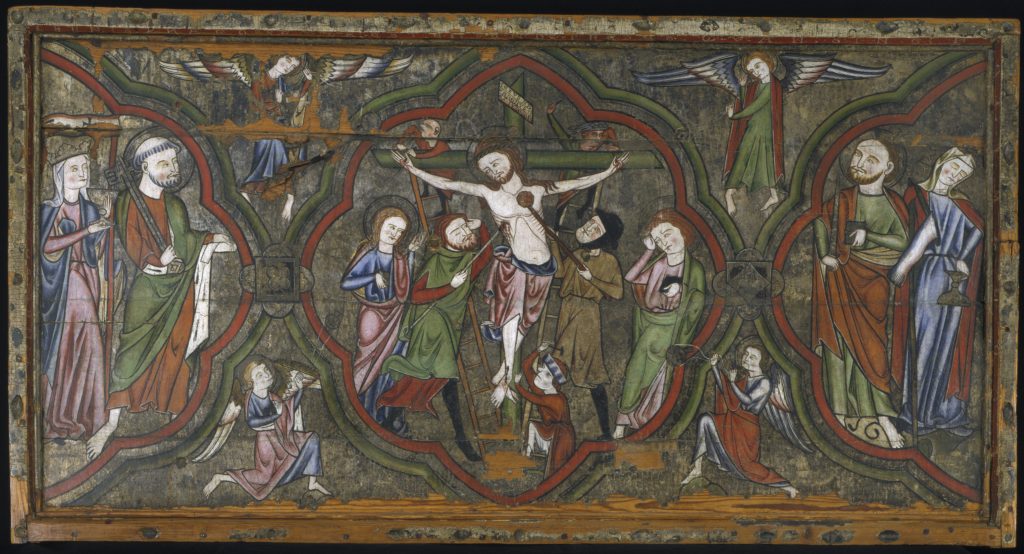This altar frontal from Kinsarvik on the Hardangerfjord shows a multi-figured Crucifixion scene in a simultaneous narrative inside a multi-lobed frame in the central section. Christ hangs from the cross in a slightly bent posture. His head bows to the right side and he is looking at his mother Mary. St John the Evangelist stands on the other side of the cross with his hand raised in a mourning gesture. Three hangmen, two of whom are standing on ladders, nail Christ to the cross. At the same time, Stephaton reaches him the sponge soaked in vinegar, and Longinus pierces his side. The central scene is surrounded by four angels swinging censers in the spandrels.

The left side section shows St Peter and the personification of the church (Ecclesia). The crowned Church turns her eyes towards Christ and holds a chalice – symbol of the Eucharist – and a victory banner. On the right stands St Paul and beside him the personification of Judaism (Synagoga), with her eyes shut, who turns away from the cross while her banner is ragged. She holds her chalice upside down and the crown is sliding from her head.
The frontal conveys a refined theological iconography that centres on Christ’s sacrificial death and thereby on the enactment at the altar – the Eucharist. The apostles St Peter and St Paul represent respectively the institutionalised church and its doctrine, and both personifications convey the message that the Christian church has vanquished Judaism. The Eucharistic aspect of the representation is reinforced by the censer-swinging angels. An inscription in Latin on the surrounding frame further clarifies the intended reading of the frontal’s pictorial programme: Nec deus est nec homo presens quam cernis imago sed deus est et homo presens quam signat imago (‘The image is neither God nor Man, but God and Man are that which the image represents’). This widespread formula derived from the writings of the Benedictine monk Baldric of Bourgueil (1046-1130).
The frontal probably decorated the high altar in the chancel of the stone church at Kinsarvik that was rebuilt around the middle of the thirteenth century. The foundations of the medieval altar revealed during archaeological excavations match the width of the frontal. The simultaneous mode of the narrative in the Crucifixion scene is also found on the frontals from Eid and Nes (I) (MA 6, MA 2).
Norway, c. 1275
From Kinsarvik (Hardanger), in the museum before 1837
Pinewood, painted
H 103.5 x W 197.5 x D 5 cm
Inv. no. MA 10